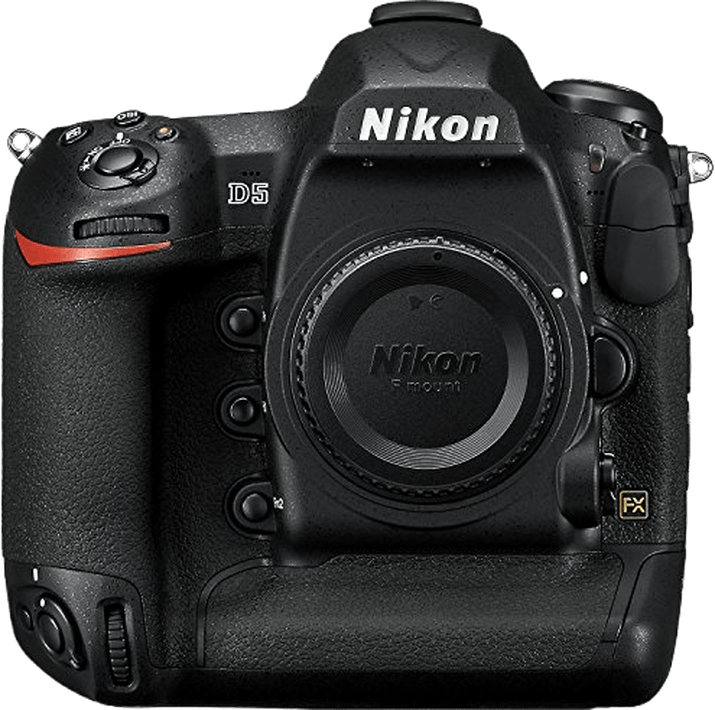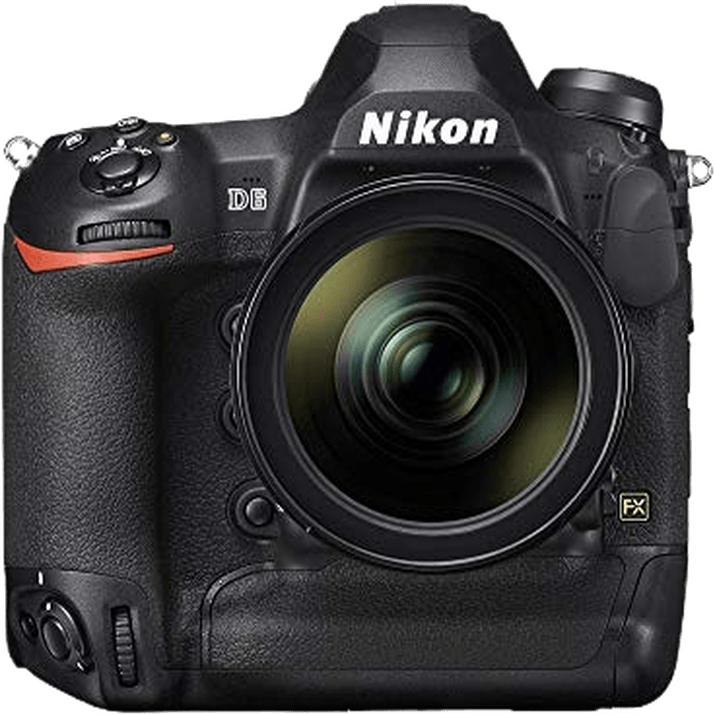Nikon D5 vs D6 Comparison
Nikon D5

Nikon D6

The Nikon D6 emerges as the winner with a score of 80/100, while the Nikon D5 trails behind with a score of 74/100. Both cameras are DSLRs, announced in 2016 and 2020 respectively, and share the same launch price of $6500. Their dimensions are almost identical, with the D6 being slightly taller at 163mm compared to the D5’s 159mm, both having a width of 160mm and depth of 92mm. The D6 is a bit heavier, weighing 1450g, while the D5 weighs 1415g.
The Nikon D6 outperforms the D5 with its higher score, reflecting its advanced features and improvements over its predecessor. On the other hand, the Nikon D5 still has its merits, offering a slightly lighter body for those who prioritize reduced weight in their camera gear.
Taking into account their shared specifications and the D6’s superior performance, it’s clear that the Nikon D6 is the better choice for photographers seeking the latest and greatest in DSLR technology. However, the Nikon D5 remains a viable option for those looking for a more lightweight camera without sacrificing too much in terms of quality and performance.
Nikon D5 vs D6 Overview and Optics
The Nikon D6 outperforms the Nikon D5 in optics with a score of 75/100, compared to the D5’s 72/100. Both cameras share several optical specifications, including a 20.8-megapixel resolution, CMOS sensor type, full-frame sensor size, Nikon F lens mount, and lack of image stabilization.
The D6’s superior optics can be attributed to its faster shooting speed and more advanced processor. With a shooting speed of 14 frames per second, the D6 is faster than the D5’s 12 frames per second. This difference provides a noticeable advantage in capturing fast-moving subjects and action shots. The D6 also features the Expeed 6 processor, an upgrade from the D5’s Expeed 5 processor. This enhancement contributes to better image quality and processing speed.
Another aspect where the D6 excels is its higher DXOMARK score of 97 for the sensor, compared to the D5’s score of 88. This higher score signifies better overall image quality, dynamic range, and low-light performance.
However, the D5 has its merits, particularly in terms of cost-effectiveness. As an older model, it is likely to be more affordable than the D6, making it a suitable choice for photographers on a budget or those who do not require the latest features.
Taking all factors into consideration, the Nikon D6 offers better optics and performance than the Nikon D5, especially in shooting speed, processor, and sensor quality. While the D5 remains a viable option for those seeking a more budget-friendly alternative, the D6 is the clear winner in terms of optical performance.
Nikon D5 vs D6 Video Performance
The Nikon D6 outperforms the Nikon D5 in video capabilities, scoring 83/100 compared to the D5’s score of 70/100. Both cameras share some common specifications, such as 4K maximum video resolution and 3840 x 2160 maximum video dimensions. They also both have built-in time-lapse functionality.
The D6 surpasses the D5 in its max video frame rate, offering 60fps while the D5 only provides 30fps. This higher frame rate allows the D6 to capture smoother, more detailed video, making it the superior choice for videographers seeking optimal performance.
Although the D5 falls short in video frame rate, it still delivers quality video. Its 4K resolution and built-in time-lapse functionality are valuable features that cater to various video applications. However, the D5’s lower frame rate may limit its appeal for those prioritizing high-quality video capture.
When comparing the Nikon D5 and D6, it is evident that the D6 is the better choice for videographers due to its higher video score and superior frame rate. The D5 remains a viable option for those who value 4K resolution and time-lapse capabilities, but its lower frame rate may deter those seeking the best video performance.
Nikon D5 vs D6 Features and Benefits
The Nikon D6 outperforms the Nikon D5 in features with a score of 87/100, compared to the D5’s 74/100. Both cameras share some common specifications, including a 3.2-inch screen size, a screen resolution of 2,359,000 dots, touchscreen capabilities, and WiFi connectivity.
The Nikon D6 surpasses the D5 in several aspects. It has GPS and Bluetooth connectivity, while the D5 lacks these features. The built-in GPS allows for easy geotagging of images, and the Bluetooth connectivity enables seamless sharing and remote control options with compatible devices.
The Nikon D5 does not have any notable advantages over the D6 in terms of features. However, it is essential to consider other aspects such as performance, image quality, and price when making a final decision between the two cameras.
After examining the features of both cameras, it is clear that the Nikon D6 offers more advanced and versatile options compared to the Nikon D5. The additional features of the D6, such as the flip screen, GPS, and Bluetooth connectivity, make it a more attractive choice for photographers seeking a camera with a comprehensive set of capabilities.
Nikon D5 vs D6 Storage and Battery
The Nikon D6 outperforms the Nikon D5 in storage and battery, scoring a perfect 100/100 compared to the D5’s 87/100. Both cameras share similarities, such as having two memory card slots. However, the D6 accepts CFexpress and XQD cards, while the D5 takes Compact Flash and XQD cards.
The D6’s superiority mainly comes from its USB charging capability, which the D5 lacks. This feature provides convenience and flexibility when charging the camera. However, the D5 has a slightly longer battery life, offering 3780 shots compared to the D6’s 3580 shots. Both cameras use different battery types, with the D5 using the EN-EL18a and the D6 employing the EN-EL18c.
Despite the D5’s longer battery life, the Nikon D6 remains the better choice for storage and battery due to its compatibility with the faster CFexpress cards and USB charging feature.
Nikon D5 vs D6 – Our Verdict
Are you still undecided about which camera is right for you? Have a look at these popular comparisons that feature the Nikon D5 or the Nikon D6:

